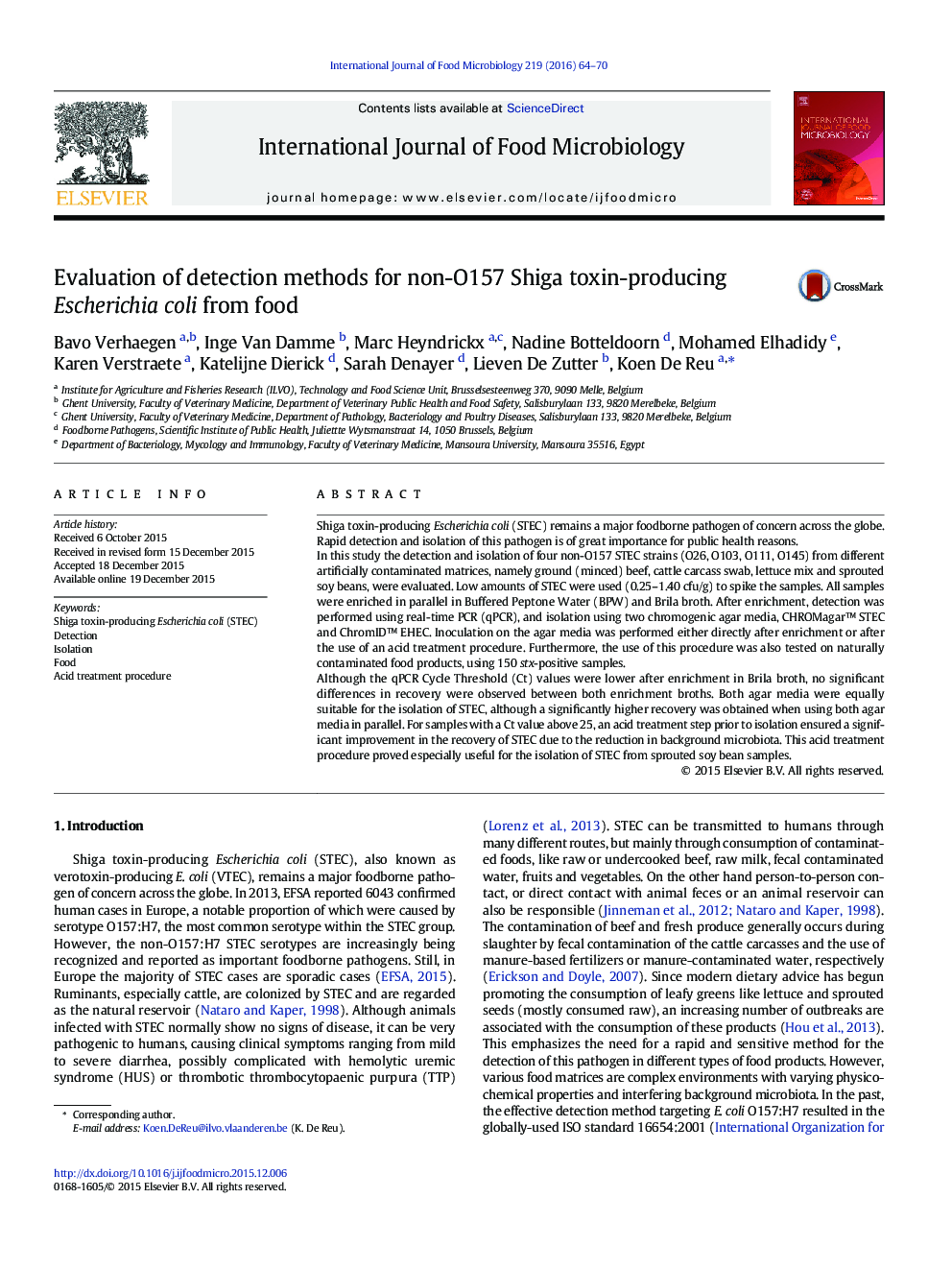| کد مقاله | کد نشریه | سال انتشار | مقاله انگلیسی | نسخه تمام متن |
|---|---|---|---|---|
| 4366366 | 1616564 | 2016 | 7 صفحه PDF | دانلود رایگان |

• We examined culture-based detection methods for non-O157 STEC in both artificially and naturally contaminated food.
• Enriched samples with a real-time PCR threshold value above 25 merit an additional acid treatment procedure.
• All isolations should preferably be performed using both a selective and less-selective isolation medium in parallel.
Shiga toxin-producing Escherichia coli (STEC) remains a major foodborne pathogen of concern across the globe. Rapid detection and isolation of this pathogen is of great importance for public health reasons.In this study the detection and isolation of four non-O157 STEC strains (O26, O103, O111, O145) from different artificially contaminated matrices, namely ground (minced) beef, cattle carcass swab, lettuce mix and sprouted soy beans, were evaluated. Low amounts of STEC were used (0.25–1.40 cfu/g) to spike the samples. All samples were enriched in parallel in Buffered Peptone Water (BPW) and Brila broth. After enrichment, detection was performed using real-time PCR (qPCR), and isolation using two chromogenic agar media, CHROMagar™ STEC and ChromID™ EHEC. Inoculation on the agar media was performed either directly after enrichment or after the use of an acid treatment procedure. Furthermore, the use of this procedure was also tested on naturally contaminated food products, using 150 stx-positive samples.Although the qPCR Cycle Threshold (Ct) values were lower after enrichment in Brila broth, no significant differences in recovery were observed between both enrichment broths. Both agar media were equally suitable for the isolation of STEC, although a significantly higher recovery was obtained when using both agar media in parallel. For samples with a Ct value above 25, an acid treatment step prior to isolation ensured a significant improvement in the recovery of STEC due to the reduction in background microbiota. This acid treatment procedure proved especially useful for the isolation of STEC from sprouted soy bean samples.
Journal: International Journal of Food Microbiology - Volume 219, 16 February 2016, Pages 64–70